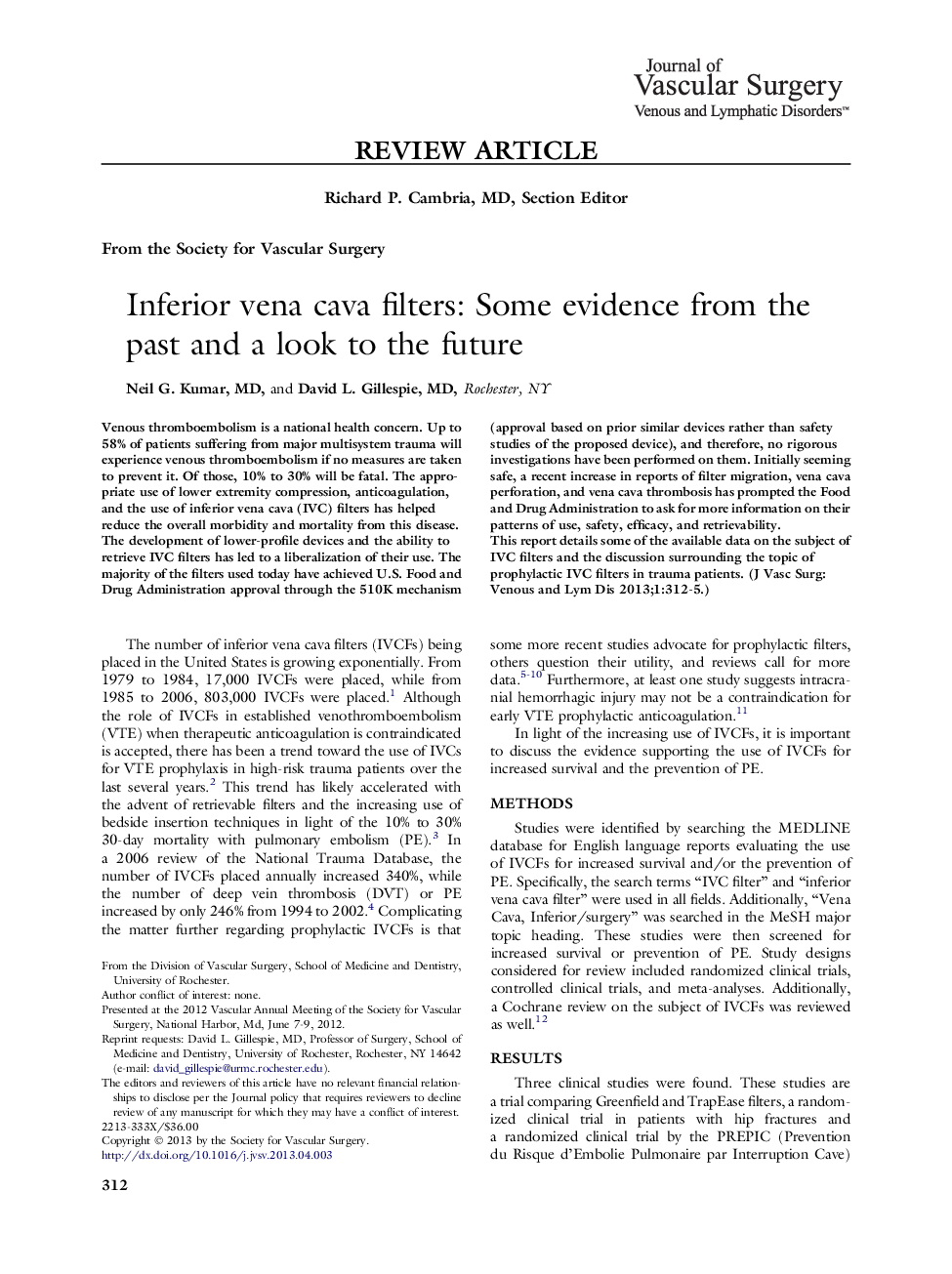| کد مقاله | کد نشریه | سال انتشار | مقاله انگلیسی | نسخه تمام متن |
|---|---|---|---|---|
| 2998164 | 1180226 | 2013 | 4 صفحه PDF | دانلود رایگان |

Venous thromboembolism is a national health concern. Up to 58% of patients suffering from major multisystem trauma will experience venous thromboembolism if no measures are taken to prevent it. Of those, 10% to 30% will be fatal. The appropriate use of lower extremity compression, anticoagulation, and the use of inferior vena cava (IVC) filters has helped reduce the overall morbidity and mortality from this disease. The development of lower-profile devices and the ability to retrieve IVC filters has led to a liberalization of their use. The majority of the filters used today have achieved U.S. Food and Drug Administration approval through the 510K mechanism (approval based on prior similar devices rather than safety studies of the proposed device), and therefore, no rigorous investigations have been performed on them. Initially seeming safe, a recent increase in reports of filter migration, vena cava perforation, and vena cava thrombosis has prompted the Food and Drug Administration to ask for more information on their patterns of use, safety, efficacy, and retrievability.This report details some of the available data on the subject of IVC filters and the discussion surrounding the topic of prophylactic IVC filters in trauma patients.
Journal: Journal of Vascular Surgery: Venous and Lymphatic Disorders - Volume 1, Issue 3, July 2013, Pages 312–315